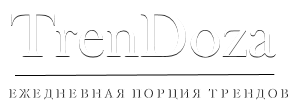Types of Beam Splitters:
Dichroic Beamsplitters: A dichroic beamsplitter is basically a dichroic mirror or an optical fiber, which transmits only specific wavelengths while refecting others. The beam splitters usually worked at non-normal angles of incidence. The reflected light will make an angle of 90 if the dichroic beamsplitter is placed at an orientation of 45 degrees to that of the incident light. Dichroic beamsplitters are non-absorbent in nature, therefore the light is either gets reflected or transmitted. Given below are the three factors that matter most when it comes to dichroic beamsplitters:
- Reflecting range- the range of wavelength for which the optic reflects.
- Transmission range- the range of wavelength for which the optic transmits.
- Polarization- the degree measure of the beam separation due to polarization.
We can define the Edge Steepness as the slope of the edge or cut-off point between the transmission and reflection. A sharp edge refers to a sharp transition between the reflected field and the transmitted field. The cut-off edge, abbreviated SP, is defined as the wavelength of the edge at 50% of the maximum transmission of the filter, half between full transmission and full reflectance.
Polarizing beamsplitters:
In this type of beamsplitter, on the basis of the polarity, the optics divide the beam of light into two separate beams. For the transmission of p-polarized light, these beamsplitters are also used while reflecting all s-polarized light in a different direction. Different types of beam splitters are used to produce products optics optical mirror. The light from these beam spliiters is laser light polarized. The Polarizing Beamsplitters manufactured by us in our factory include Cubic Beamsplitter, Plate Beamsplitter, and Lateral Displacement Beamsplitter.
Non-polarizing beamsplitters:
A non-polarizing beamsplitters usually splits the beam of light without getting dependent on the polarization state. The polarity dependences in these filters are usually very low (typically around 3-6%). The non-polarizing beam splitters are used in a wide range of applications in laser beam manipulation and interferometry, and we offer both plate and cubic options. A metallic coating that offers a partial reflection for the wavelength of the user’s choice can be used to customize the dichroic mirrors.
Laser Beamsplitters:
As the name suggests, a laser beam splitter separates a beam of leaser into two parts, and it usually reflects a part of the beam (either differentiated by polarization or wavelength). The plate, cubic, or lateral displacement beamsplitters are used for the laser applications, and each can be custom-built for the laser wavelength.






